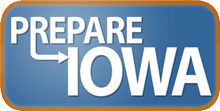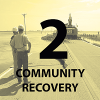


Capability 2: Community Recovery
Definition: Community recovery is the ability to collaborate with community partners, (e.g., healthcare organizations, business, education, and emergency management) to plan and advocate for the rebuilding of public health, medical, and mental/behavioral health systems to at least a level of functioning comparable to pre-incident levels, and improved levels where possible. This capability supports National Health Security Strategy Objective 8: Incorporate Post-Incident Health Recovery into Planning and Response. Post-incident recovery of the public health, medical, and mental/behavioral health services and systems within a jurisdiction is critical for health security and requires collaboration and advocacy by the public health agency for the restoration of services, providers, facilities, and infrastructure within the public health, medical, and human services sectors. Monitoring the public health, medical and mental/behavioral health infrastructure is an essential public health service.
Functions and Associated Performance Measures: This capability consists of the ability to perform the functions listed below. At present there are no CDC-defined performance measures for these functions.
Function 1: Identify and monitor public health, medical, and mental/behavioral health system recovery needs
Function 2: Coordinate community public health, medical, and mental/behavioral health system recovery operations
Function 3: Implement corrective actions to mitigate damages from future incidents
 CASPER Awareness Scenario [1]
CASPER Awareness Scenario [1]
This awareness-level course was developed by the Upper Midwest PERLC in partnership with the Iowa Department of Public Health. The goal of this course is to provide learners with a basic understanding of what a Community Assessment for Public Health Emergency Response (CASPER) is and how it can be used following a disaster. The intended audience for this course is local public health administrators and local county emergency managers. The length of time for participants to take this course is estimated to be one hour.
 Responding to a Crisis: Managing Emotions and Stress Scenario [2]
Responding to a Crisis: Managing Emotions and Stress Scenario [2]
This adaptive scenario from the Upper Midwest PERLC covers concepts of Psychological First Aid in responding to disasters. The user makes decisions about how to respond to the emotional needs of disaster victims and volunteers. This course is intended for the public health workforce, as well as anyone involved in post-disaster recovery. Because assessment is embedded within the trainings, the user receives only need-based training as indicated by responses to the scenario. Course takes 20 - 60 minutes to complete, depending on how much training is needed.
 Effect of Disasters on Mental Health: Awareness Level [3]
Effect of Disasters on Mental Health: Awareness Level [3]
Developed by the Upper Midwest PERLC, this course is intended for anyone who will come into professional contact with disaster victims, including DMAT, hospital workers, EMTs, primary care providers and public health workers. There are three modules in this course: Module 1: Disaster, Trauma and Proximity to the Event Module 2: Psycho-Physiology of Trauma and Fear Module 3: Tools for Understanding
 Effect of Disasters on Mental Health: Technical Level [4]
Effect of Disasters on Mental Health: Technical Level [4]
Developed by the Upper Midwest PERLC, this course is intended for anyone who will come into professional contact with disaster victims, including DMAT, hospital workers, EMTs, primary care providers and public health workers. In addition to providing general knowledge, this course emphasizes two practical skills: administering psychological first aid to disaster victims in the immediate aftermath of a disaster, and screening disaster victims for common mental health disorders in the months that follow.
 Effect of Disasters on Mental Health for Children and Adolescents [5]
Effect of Disasters on Mental Health for Children and Adolescents [5]
Developed by the Upper Midwest PERLC, this course is intended for anyone who will come into professional contact with disaster victims who are children or adolescents, including DMAT, hospital workers, EMTs, primary care providers and public health workers. In addition to providing general knowledge of how disaster trauma effects this particular population, this course emphasizes practical skills: administering psychological first aid to children and adolescents in the immediate aftermath of a disaster, screening them for mental health disorders in the months that follow, and involving parents and other caregivers throughout the process.
 Community Partnering: A Risk Assessment and Emergency Operations Planning Scenario [6]
Community Partnering: A Risk Assessment and Emergency Operations Planning Scenario [6]
This course, developed by UMPERLC, provides guidance on the fundamentals of community-based planning, from contributing to a risk assessment to developing emergency operations plans (EOP) and engaging the whole community in addressing all risks and hazards. The course is intended for local public health administrators and local county emergency managers. It takes an hour or less to complete.
IS-546.A: Continuity of Operations Awareness Course [7]
This FEMA course introduces students to the concept of continuity planning. The course provides a brief overview of continuity, the legal basis for continuity planning, the Continuity Program Management Cycle, and essential elements of a viable continuity program. The course is useful to Federal, State, County, local, territorial, and tribal governments.
Community Assessment for Public Health Emergency Response (CASPER) Toolkit [8]
The Division of Environmental Hazards and Health Effects, Health Studies Branch (DEHHE/HSB) at the Centers for Disease Control and Prevention (CDC) has developed the Community Assessment for Public Health Emergency Response (CASPER) toolkit to assist personnel from any local, regional, state, or federal public health departments in conducting the CASPER during disaster. One of the main objectives in developing this toolkit is to standardize the assessment procedures focusing on United States disaster response. The CASPER toolkit provides guidelines on data collection tool development, methodology, sample selection, training, data collection, analysis, and report writing.
Rural Disaster Resilience Planning Guide [9]
Disasters can and do happen. Small, rural, remote and coastal communities have been affected by hurricanes, wildfires, water contamination and an assortment of other hazards. Resource-based jobs have often disappeared and families have moved to larger urban centres. Some communities have slowly disappeared while others have flourished. What makes the difference? Why are some communities more resilient to disasters and change? How can you help your community survive and prosper? The Rural Disaster Resilience Planning (RDRP) approach has been designed with rural communities in mind. The RDRP process includes a user-friendly guide provided by the Justice Institute of British Columbia (Canada) to help you work through the various steps to increase resiliency in your community.
Continuity of Operations Plan Template and Instructions [10]
This template from National Disaster Recovery Framework provides instructions, guidance, and sample text for the development of continuity plans and programs in accordance with Federal Continuity Directives (FCDs) 1 and 2 for the Federal executive branch. Continuity planning facilitates the performance of executive branch essential functions during all-hazards emergencies or other situations that may disrupt normal operations.
National Disaster Recovery Framework [11]
The National Disaster Recovery Framework (NDRF) from FEMA is a guide to promote effective recovery, particularly from catastrophic incidents. The NDRF provides guidance that enables effective recovery support. It provides a flexible structure that enables disaster recovery managers to operate in a unified and collaborative manner. It also focuses on how best build a more resilient Nation.
After Action Report Improvment Plan Document [12]
The After-Action Report/Improvement Plan (AAR/IP) aligns exercise objectives with preparedness doctrine to include the National Preparedness Goal and related frameworks and guidance. Exercise information required for preparedness reporting and trend analysis is included; users are encouraged to add additional sections as needed to support their own organizational needs.
Long-Term Community Recovery Planning Process: A Self-Help Guide [14]
The FEMA Long-Term Community Recovery (LTCR) Self-Help Guide is intended to provide state, tribal and local governments with a framework for implementing their own long-term community recovery planning process after a significant disaster event. It is assumed that any state, tribal, or local government undertaking a LTCR Self-Help program will have qualified staff to manage the planning process.
Sustaining Critical Services - Continuity of Operations: A Toolkit for Public Health [15]
This Advanced Practice Center toolkit from Seattle & King County Public Health is intended for health departments who have written a continuity of operations or business continuity plan, but have not developed the detailed procesdures to implement it, or lack substantial experiene putting those plans and procedures into action. The tools are applicable to health departments of any size or scope of services.
National Planning Scenarios [16]
The Federal interagency community has developed 15 all-hazards planning scenarios (the National Planning Scenarios or Scenarios) for use in national, Federal, State, and local homeland security preparedness activities. The Scenarios are planning tools and are representative of the range of potential terrorist attacks and natural disasters and the related impacts that face our nation. The objective was to develop a minimum number of credible scenarios in order to establish the range of response requirements to facilitate preparedness planning.
Links
[1] http://go.prepareiowa.com/url/f4
[2] http://go.prepareiowa.com/url/jv
[3] http://go.prepareiowa.com/url/k6
[4] http://go.prepareiowa.com/url/k7
[5] http://go.prepareiowa.com/url/k8
[6] http://go.prepareiowa.com/url/c0
[7] http://training.fema.gov/EMIWeb/IS/courseOverview.aspx?code=is-546.a
[8] http://www.emergency.cdc.gov/disasters/surveillance/pdf/CASPER_toolkit_508 COMPLIANT.pdf
[9] http://wp-rdrp-dev.jibc.ca
[10] http://www.fema.gov/pdf/about/org/ncp/coop/continuity_plan_federal_d_a.pdf
[11] http://www.fema.gov/pdf/recoveryframework/ndrf.pdf
[12] https://www.llis.dhs.gov/content/aar-ip-template
[13] http://www.cdc.gov/phlp/docs/mutual_aid_provisions.pdf
[14] http://www.training.fema.gov/EMIWeb/emischool/EL361Toolkit/assets/Long-TermCommunityRecoveryPlanningProcess.pdf
[15] http://www.apctoolkits.com/business-continuity/
[16] https://secure.nccrimecontrol.org/hsb/planning/Planning%20Documents/National%20Planning%20Scenarios%202006.pdf